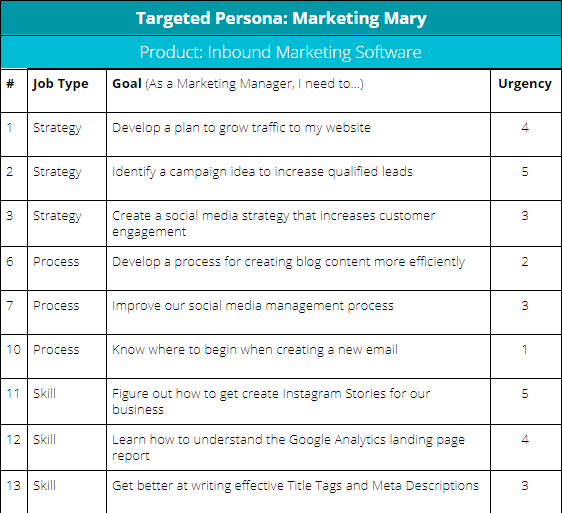
Written By:
Sean Henri
Choosing a topic for your Pillar Page, ebook, or next marketing campaign is step #1 in the content creation process, and often the most challenging and debated step.
And for good reason.
The creation of these assets will take a lot of time, money, and effort. The initiative will likely take you away from focusing on other potentially valuable projects—that website redesign project you’ve been meaning to tackle, an historical blog optimization effort, or perhaps an overhaul of your email lead nurturing campaigns.
You likely have hefty goals behind this too. Pillar Pages are often created when a company needs to build a significant amount of organic traffic to its blog or website. This means that your boss expects your Pillar Page is going to attract visitors, leads, and links. Lots of them.
What if you spend a full month creating the pillar page only nobody cares about it? What if it doesn’t rank? What if you don’t see a rise in traffic? Or, just as bad, you see a rise in the wrong kind of traffic?
Those negative outcomes are a painful possibility, but fortunately there are some steps you can take to significantly reduce that risk.
Below is a process that will help you and your organization pick a topic for your Pillar Page that will grow traffic to your site, and most importantly, resonate with your buyers.
1. Choose the Buyer Persona that you should target first.
The #1 reason that Pillar Pages fail is that they focus on a topic that the business wants to talk about rather than a topic that a specific type of buyer needs to learn about.
So first things first: This is about them, not you.
Now that we have that out of the way, let’s think about which of your buyers you should focus on first.
Ask yourself: Which of your personas does your sales team have the most success with? Which segment represents the greatest potential in your plans for growth? Which personas have historically converted from MQL to Opportunity to Customer at the highest rate?
If you focus on the persona that your organization is most likely to win as a customer, you’ll increase the chances that your Pillar Page effort provides a positive ROI.
It’s also helpful to identify what type of buyer that persona is. Are they more strategic, or tactical? What type of information do typically look for as they research solutions and make decisions?
Pillar Pages tend to be a great fit for more tactical buyers, who need in-depth guides that help them think through a topic comprehensively. (Check out these examples if you need some inspiration.)
If you’re targeting a busy executive who is mostly focused on big-picture strategy, a 2,000-15,000 word resource might not be the best way to go.
Sometimes, you may choose to pursue a persona that is NOT your typical buyer. This approach may make sense when you see your Pillar Page as more of a PR or link-building opportunity than a direct lead-generating opportunity. If this sounds like you, put extra emphasis on Step #6 in this list.
2. Brainstorm a list of your buyer’s needs.
At Pepperland Marketing, we’re firm believers that for every product, service, or solution, there is a corresponding skill, process, or strategy that your customer needs to obtain in order to find success.
These skills, processes, or strategies align directly to real customer needs that your Pillar Page should help address.
For example, in order for a working professional to pursue their Masters Degree while working full time, they’ll need to develop sharp time management skills and a strategy for affording a graduate education.
Another example: In order for a marketer to realize value from their investment in a tool like HubSpot, they’ll need to develop a strong inbound marketing strategy and content creation skills.
Brainstorming these needs can become a little easier with some structure to guide you, which is why we created this campaign topic worksheet.
To keep your ideas framed through the lense of your buyer’s point of view, consider listing each idea as a User Story. This would look something like this:
As a [PERSONA], I need to [GOAL], so that I can [BENEFIT].
Don’t make the mistake of generating these ideas without conducting thorough buyer persona research first. You may feel like you know what your customers are thinking, seeing, and doing, but if you’re not working directly with them on a day-to-day basis and haven’t spent a mile walking in their shoes, there’s a good chance you’ll be making some false assumptions.
3. Eliminate any ideas that don’t lead to your solution.
Once you’ve brainstormed the list of needs that your ideal customer is likely facing, you’ll need to remove any of those needs that do not either directly or indirectly lead the customer to your solution.
For example, let’s think back to the working professional who wants to pursue a master’s degree. If they have children, then on top of balancing their career and education, they will also need to develop a plan around childcare. Though this is a clear need of the customer, unless your product or service addresses this directly or indirectly, it is not something that you should focus your efforts on.
By ensuring there is a direct line between the need and your solution, you will see the greatest return on your content marketing investment.
Remember that your goal should be to find a need, problem, or pain that that your prospects or customers will need to overcome in order to adopt or find success with your product or solution. The purpose of your Pillar Page content will be to give them the process, skill, or strategy required to overcome that challenge.
4. Prioritize by urgency, clarity, and level of pain.
With a list of 5-20 needs in mind, it’s time to find the one that your buyer will be the most motivated to fulfill. You are looking for a pain or problem where the cost of inaction or living with the status quo significantly outweighs the cost and effort to solve it.
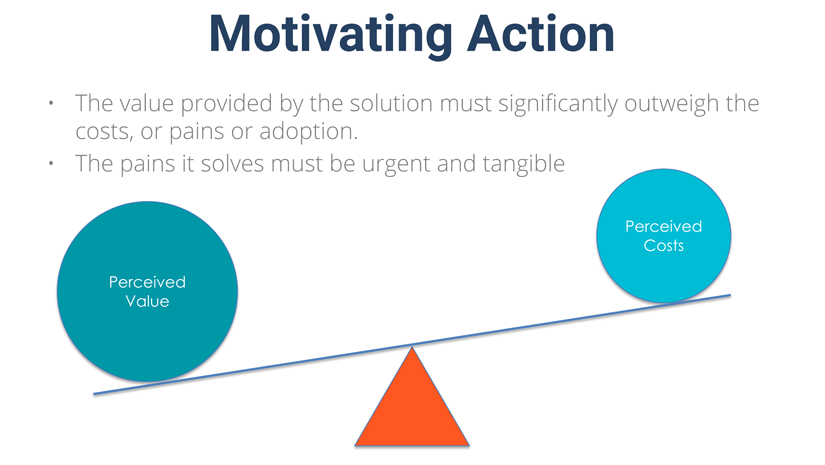 List out all of your ideas as sticky notes on a whiteboard, or in a spreadsheet, and assess their:
List out all of your ideas as sticky notes on a whiteboard, or in a spreadsheet, and assess their:
- Level of severity: Is this something that someone would lose their job over if not solved, or is it more of an annoyance that someone could easily go on living with?
- Clarity: Is this a pain or need that everyone is aware of and regularly discussed? Or is it more like the leak behind the wall that you don’t know about until it’s too late?
- Monthly Search Volume: Is anyone searching for this topic on Google? You’ll need a keyword tool like Moz Keyword Explorer or Ubersuggest for this.
Start by listing out each idea, and then scoring them by severity and clarity on a scale of 1-5. Layer in the max monthly search volume pulled from your keyword research tool.
[su_table responsive=”yes”]
| Topic | Clarity | Urgency | Search Volume |
|---|---|---|---|
| Need 1 | 3 | 5 | 500 |
| Need 2 | 4 | 4 | 50 |
| Need 3 | 4 | 1 | 100 |
| Need 4 | 2 | 3 | 200 |
| Need 5 | 1 | 4 | 10 |
[/su_table]
Next, map each rated idea in a bubble chart or in a simple 4 quadrant grid. We’re looking for the topics in the upper right-hand corner that also reflect a higher search volume.
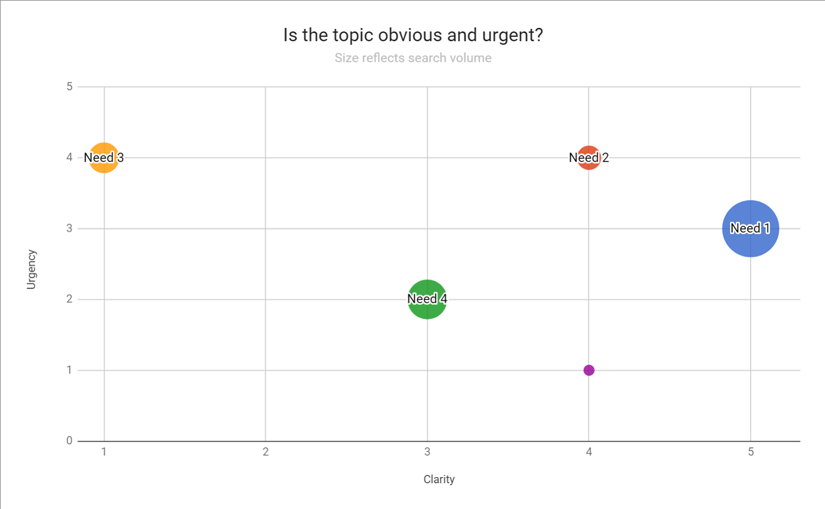 5. Look for an unmet or underserved need.
5. Look for an unmet or underserved need.
With a topic or two now in mind that you know your audience will be motivated to seek out, you’ll want to make sure that there is still an opportunity for you to be the one to solve it.
You want to avoid being one of 1,000 solutions to the problem, as it will be extremely difficult to compete and you’ll most likely be too late to the party.
Try doing a quick Google search for your topic and evaluate the results. I tried this exercise prior to writing this blog, searching “how to pick a topic for a pillar page” in Google. You can see the results below. There was plenty of content that answered the question, “what is a pillar page?” but not a single article that addressed the topic I was searching for head on. This is an example of an unmet or underserved need, which presented an opportunity for me to the first to fulfill.
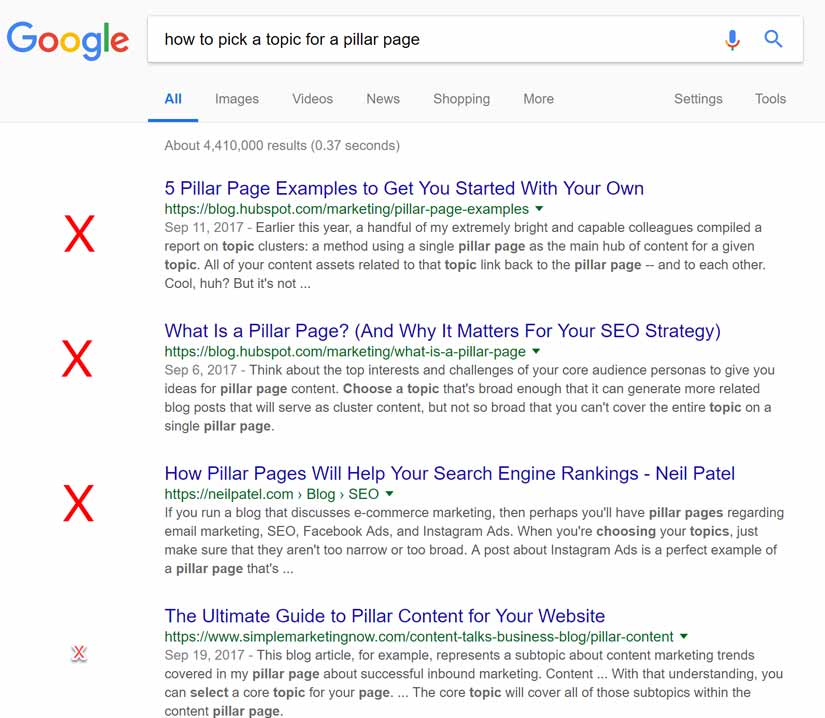
If you find that there are many other sites already addressing the topic, try assessing the quality of that content. Do they serve the searcher’s needs well? Do you see an opportunity to answer the need in a much more effective, or otherwise better, way? This could mean going into more depth, addressing the topic with more clarity, including visual aids, or some other means of making your content more useful to your targeted audience.
If you do not see an opportunity to be the first to meet the need or a way to meet that need in a significantly better way than the competition, you may want to consider a different topic.
6. Ask yourself: Is this topic linkable? Is this topic shareable? Who would help me promote it?
Creating content that answers the searcher’s intent, serves your targeted audience well, and helps them achieve their goals is essential if you want your content to rank well in search results and grow traffic, but it’s not the only thing that you need to do in order to be successful.
Google and other search engines also evaluate the number of other websites that link to your content as a sign of its trustworthiness and authority. This means that your ability to secure external links to your Pillar Page isa must if you wish for it to rank well in search results.
A quick test of the linkability of your topic is to try the “inurl:” search operator plus the word “links.html” and your topic in quotes.

This will return a list of sites that curate lists of valuable links on a given topic. If you find hundreds of results, chances are that you have a very linkable topic.
To find out if the topic is social friendly and likely to be shared, try searching your topic in a tool like BuzzSumo. Look for topics with dozens, or ideally hundreds, of results.
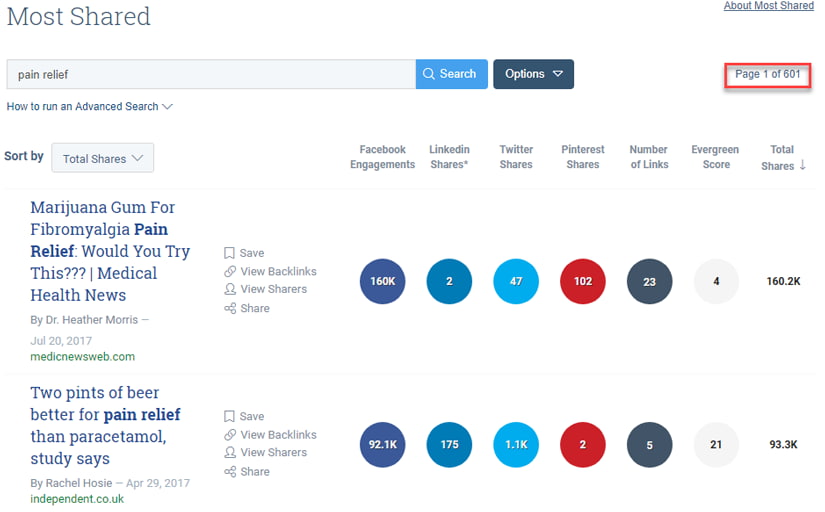
If you’ve found a topic that you feel is either linkable or shareable, or ideally both, you’ll want to test your assumptions by beginning to build a real list of bloggers, influencers, journalists, and people within your network who you believe would help share your content once you’ve created it.
Try brainstorming an actual pitch to these people. What’s in it for them to share or link to your content? Is your pitch compelling?
7. When unsure, test it first.
If you’ve read this far, you’re likely now thinking “wow, this is going to be a TON of work.” You’re likely having some doubts that the effort will be worth it, and perhaps the risk of investing all this time, money and effort into a Pillar Page that may or may not be successful is a bit too risky.
Executed well, Pillar Pages are one of the most effective tactics out there for ranking highly in search results for heavily searched, highly competitive terms—but there certainly is some risk.
If you’re a little bit too uneasy about going all in on a pillar page, you can test the viability of the topic by starting with a high-quality, long-form blog post first. Make sure the article is good enough to have a decent shot at ranking highly in search results, and then watch the data start to come in.
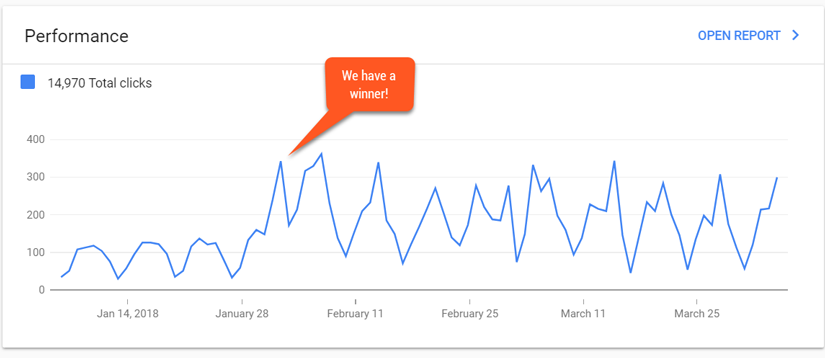 If you see the article start to climb towards the top ten and begin to rank for dozens, or even hundreds, of terms, there’s a good chance that you’ve found a good opportunity. You can now invest the additional time to cover the topic with more depth, and invest in the custom graphics, videos, or other elements that you skipped over initially.
If you see the article start to climb towards the top ten and begin to rank for dozens, or even hundreds, of terms, there’s a good chance that you’ve found a good opportunity. You can now invest the additional time to cover the topic with more depth, and invest in the custom graphics, videos, or other elements that you skipped over initially.
Taking the Leap
Whether you go all in all at once or take a more conservative approach to developing your first Pillar Page, it’s sure to be a learning experience. If you take the time do the right level of research and thought upfront, hopefully it will be one that helps your company break into a whole new tier of traffic growth and inbound marketing success.

